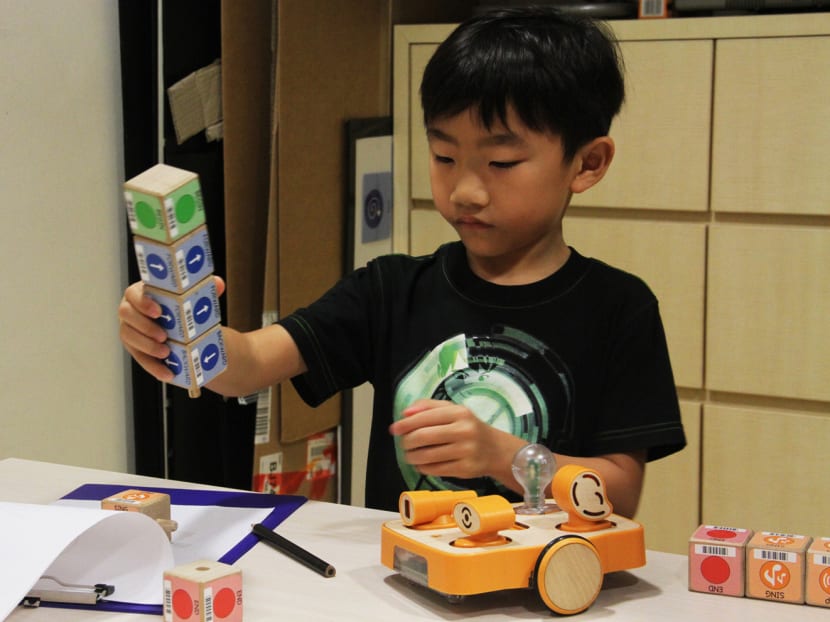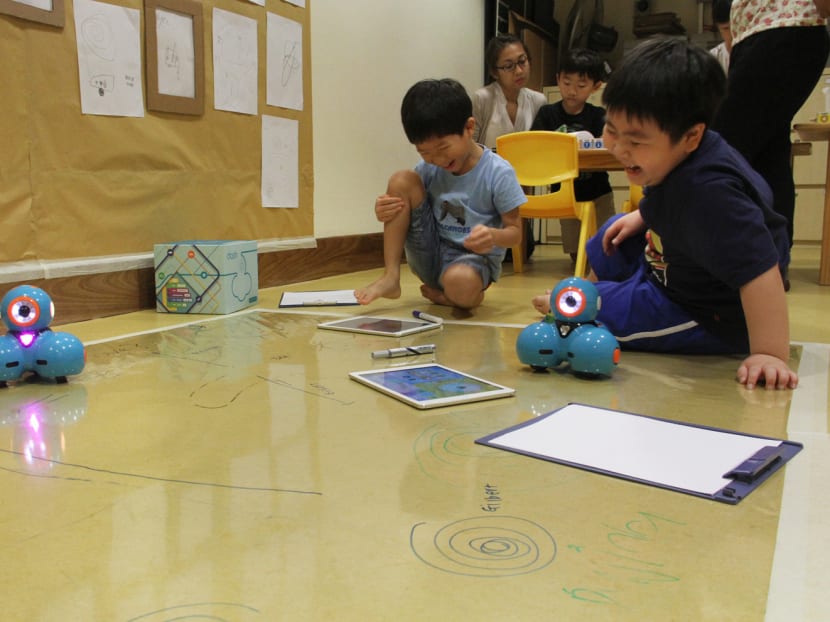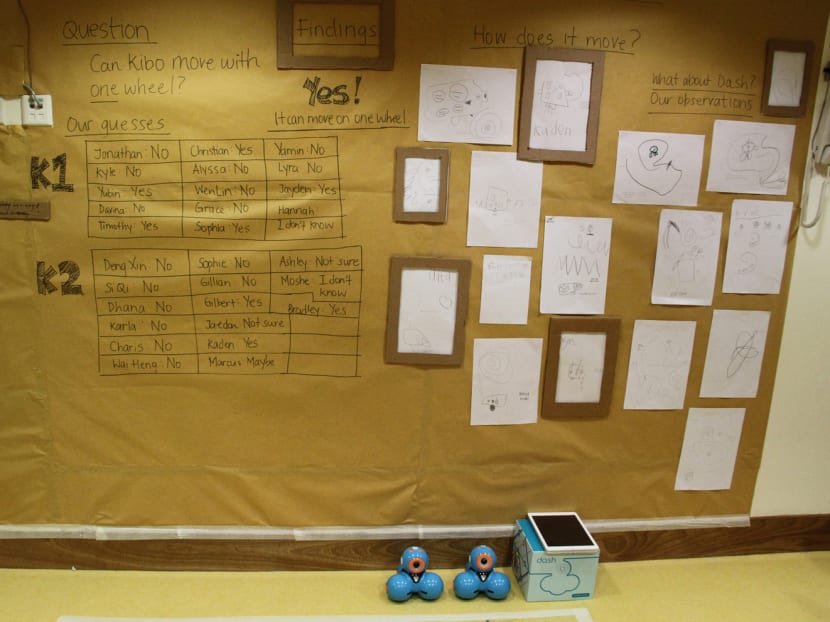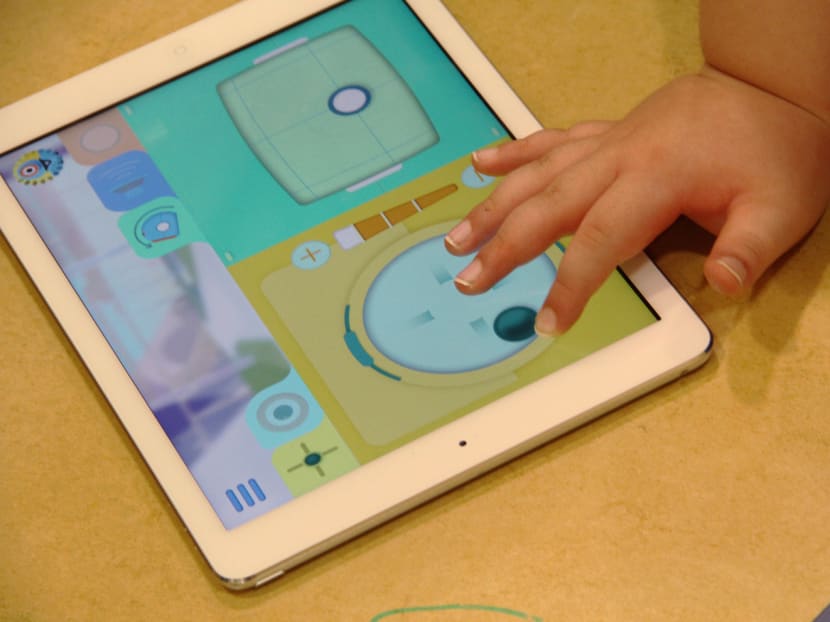Introducing circuitry, robots to pre-schoolers
SINGAPORE — Given the task of keeping lions away from a cowshed at night with the help of moving lights, pre-schoolers at Temasek Polytechnic’s Preschool Learning Academy (PLAY@TP) first thought of taping a torch onto their small robot.




SINGAPORE — Given the task of keeping lions away from a cowshed at night with the help of moving lights, pre-schoolers at Temasek Polytechnic’s Preschool Learning Academy (PLAY@TP) first thought of taping a torch onto their small robot.
But this proved too cumbersome, and the five- and six-year-olds decided to use another robot, which came with a light bulb attached.
They brainstormed and programmed different travel patterns for the robot. After several rounds of trial and error, they successfully programmed the robot to move within the confines of a make-believe cowshed.
Their “task” was part of a pilot study using tech-enabled toys to inspire pre-schoolers to solve problems and tinker with technology — the first such collaboration between the Infocomm Development Authority of Singapore (IDA) and a pre-school.
The IDA had researched the impact of these tech-enabled toys in early childhood settings overseas before embarking on this study.
For 10 weeks between January and March, 35 children from Play@TP, an experimental kindergarten in TP, were exposed to toys and devices that required basic programming and electronics skills.
Mr Ang Teck Hua, director of the centre for child study, led the initiative. He said the aim was to discover how technology could enhance learning experiences in early childhood: “With technology tools in the hands of students, how do they problem-solve and innovate?
“It’s not only about getting (the children) to sit down in front of computer screens and increasing their screen time, but there’s also the hands-on element in making things,” said Mr Ang.
He and his team had documented qualitative observations of the children during the study, and said the findings have been positive.
During the initial weeks of the study, the Kindergarten One and Two children were tasked with making Chinese New Year cards with LED stickers and copper strips. They also learnt how to connect electrical circuits to power up a light bulb and a mini fan.
Subsequently, the children were taught how to plan their robots’ travel patterns and introduced to robots that could be programmed to move in various directions via the simple punching of buttons or an iPad programme.
The pre-schoolers also played with more complicated robots that were programmed by scanning barcodes depicting actions such as moving left, right, or forward.
Elaborating on the findings, researcher Ang Si Hui noted that the pupils were excited to figure out how the toys worked: “We found that (the children) were more keen to problem-solve using the toys and tried to help their friends to find solutions.”
She added that at the end of the study, their teachers noticed that the children displayed greater concentration in completing their tasks and would persevere even on difficult challenges.
The plan is to extend the study over the next school term by introducing, say, environmental technological tools such as solar cells and getting the children to solve real-life problems, said Mr Ang. He does not rule out the possibility of expanding the study to more pre-schools, but this will depend on the findings of subsequent studies.






